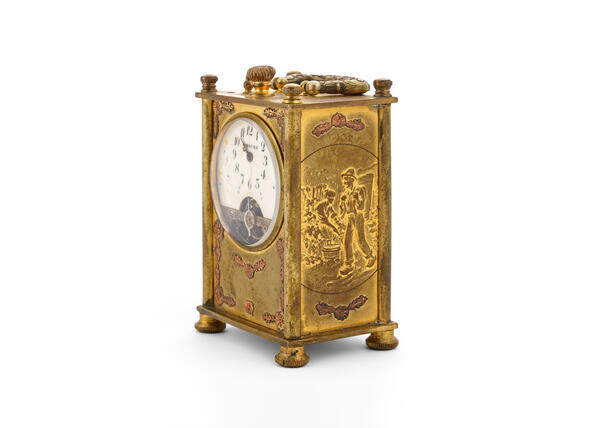The carriage clock was passed down through the Salkov family from the early 19th century.
Most of the men in this lineage were low-ranking officers in the army and navy. The first mention of the Salkov family appears in the documents of the Armoury Chamber of the Central State Archive of Ancient Acts, where Zachar Salkov is noted. In 1613, he served as a voivode in the town of Parfenyevo near Uglich.
At that time, foreign legionnaires were invited to serve in the Russian army. Among them were 60 soldiers from Ireland and Scotland, led by George Learmonth. He served the tsar and fought against Polish invaders. Learmonth converted to Orthodoxy and became, under the name of Yuri Andreevich, the progenitor of the Russian noble family Lermontov. For his service, he received from the tsar the Kuznetsovo estate in the Galich district.
Zachar Salkov settled nearby. For his “successful resistance against Prince Vladislav’s incursion, ” he was awarded the estate of Solovtsovo. The Lermontovs and the Salkovs became neighbors.
Later, their descendants intermarried. Retired second major Mikhail Petrovich Lermontov was the leader of the nobility of the Galich district; in the neighboring Kologrivsky district, this status was held by retired lieutenant Gennady Ivanovich Salkov, the great-grandfather of the writer Arkady Petrovich Gaidar. Gennady Ivanovich’s mother, Marfa Nikitichna Baskakova (the daughter of Elizaveta Lermontova, the great-great-granddaughter of George Learmonth), married Ivan Vasilyevich Salkov. Thus, Pyotr Lermontov (the great-grandfather of the poet Mikhail Yuryevich Lermontov) and Matvey Lermontov (the great-great-grandfather of Arkady Gennadyevich Salkov, father of Natalya Arkadyevna and grandfather of Arkady Petrovich Gaidar) are brothers. Arkady Gennadievich Salkov himself was Mikhail Lermontov’s fifth cousin.
The mother of Arkady Petrovich Golikov, who later took the surname Gaidar, was Natalya Arkadyevna Golikova, née Salkova. Her father, Arkady Gennadievich Salkov, was born in August 1850 in Vladimir. He graduated from the Vilna Infantry School and joined the 37th Infantry Regiment. He married, and on October 6, 1881, his daughter Natalya was born. Shortly thereafter, his wife passed away. In 1890, he married for the second time, to Elizaveta Shtiborskaya (or Shibinskaya), and resigned from the army. The relationship between the stepmother and stepdaughter did not develop well.
Natalya Salkova studied at gymnasium, sang, and wrote
poetry. By her senior years, she was fluent in German and French. She met Pyotr
Isidorovich Golikov in Kursk. They got married and had four children: Arkady,
Natalya, Olga, and Ekaterina.







